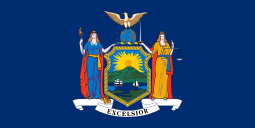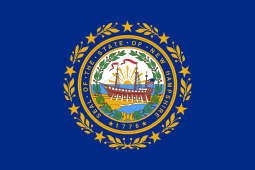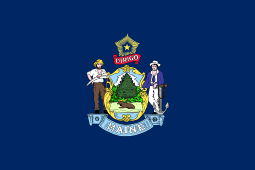East–West Highway (New England)
The East–West Highway is a long-proposed east–west highway corridor in northern New England (Maine, New Hampshire, and Vermont), intended to link remote northern communities in those states with markets in the Maritimes, Quebec, and upstate New York.
History
Low population and natural barriers like the White Mountains have long impeded significant economic development in northern New England.
| |
|---|---|
| Location: |
Albany, NY – Portsmouth, NH or Glens Falls, NY – Calais, ME |
Proposals for an east–west highway date back to the 1940s. In the early 1970s, all three northern New England states and New York proposed two new Interstate Highway corridors, both of which may have been designated as Interstate 92:
- From Albany, New York, to Portsmouth, New Hampshire, incorporating the route that is now New Hampshire Route 101.
- From Glens Falls, New York, to Calais, Maine, tracing U.S. Route 4 through Vermont and New Hampshire.
The Federal Highway Administration ultimately did not approve the plan.
Senator Olympia Snowe of Maine said in 2004 that the region is disadvantaged by the fact that it was the only region in the United States for which a federal High Priority Corridor was not designated in the 1991 Intermodal Surface Transportation Efficiency Act.[1]
In 2012, the east–west highway was again proposed, this time as a privately financed toll road.[2]
Location
Current backers of the highway propose an east–west axis through northern and central Maine. One portion of the new highway would run from Interstate 395 in Brewer, Maine, to the Canada–United States border near Calais, with a direct link to New Brunswick Route 1—a major transportation corridor serving the Maritimes. A second would travel northwest from Interstate 95 near Waterville, Maine, to the Canada–United States border at Coburn Gore, with a connection to a proposed extension of Quebec Autoroute 10 toward Montreal. A third would travel due west from Interstate 95 near Waterville, following the U.S. Route 2 corridor through Maine, New Hampshire, Vermont, and upper New York state.
Northern New England is served by three north–south freeways radiating generally northwards from Boston, Massachusetts — from east to west, I-95, Interstate 93 and U.S. Route 3 all coming from or through the Boston metro area, and westernmost of all, by Interstate 91, which follows the Connecticut River. However, the northernmost complete east–west freeway existing within the region, Interstate 90 in Massachusetts, does not enter northern New England. East–west travel through (and within) northern New England is facilitated by three freeway segments:
- Interstate 89 between Montpelier, Vermont, and Burlington.
- US-4 west of Rutland, Vermont, to the New York state line.
- New Hampshire Route 101 from Manchester, New Hampshire, eastward to the ocean.
Opposition
A number of groups in Maine oppose the creation of the East-West Highway / Corridor, citing environmental concerns such as the impact on wetlands and the risks of oil spills from pipelines along the corridor, as well as the increased impact of sprawl-type development.[3] The issue has led to repeated protests[4][5] and was one of the few areas of agreement between the candidates for governor of Maine in 2014.[6]
See also
-
 New York portal
New York portal -
 Vermont portal
Vermont portal -
 New Hampshire portal
New Hampshire portal -
 Maine portal
Maine portal -
 U.S. Roads portal
U.S. Roads portal - Interstate 98
- Future Interstate Highways
References
- ↑ Senator Olympia Snowe (25 June 2004). "East–West Highway Will Connect Mainers to All Points In-Between and Beyond". Weekly Senate Update.
- ↑ "Transportation Committee passes bill for east-west highway study". Bangor Daily News. Retrieved 2012-02-18.
- ↑ "Opposition intensifies to proposed East-West Highway in Maine". Portland Press Herald. Retrieved 2014-08-07.
- ↑ "Maine Grandmothers Unite to Halt Plans for New Highway". MPBN. Retrieved 2014-08-07.
- ↑ "15 reasons the East-West Highway will never be built (plus a political bonus!)". The Portland Phoenix. Retrieved 2014-08-07.
- ↑ "Gubernatorial candidates see eye to eye — mostly — on Maine's proposed east-west highway". Bangor Daily News. Retrieved 2014-08-07.
External links
- Maine Department of Transportation 1999 east–west highway corridor study executive summary
- Maine Department of Transportation Web page on the highway proposal
- Steve Anderson's BostonRoads.com: Unbuilt Interstate 92 in New England
- Maine Citizens for Increased Jobs and Safety (Taken from the Internet Archive)